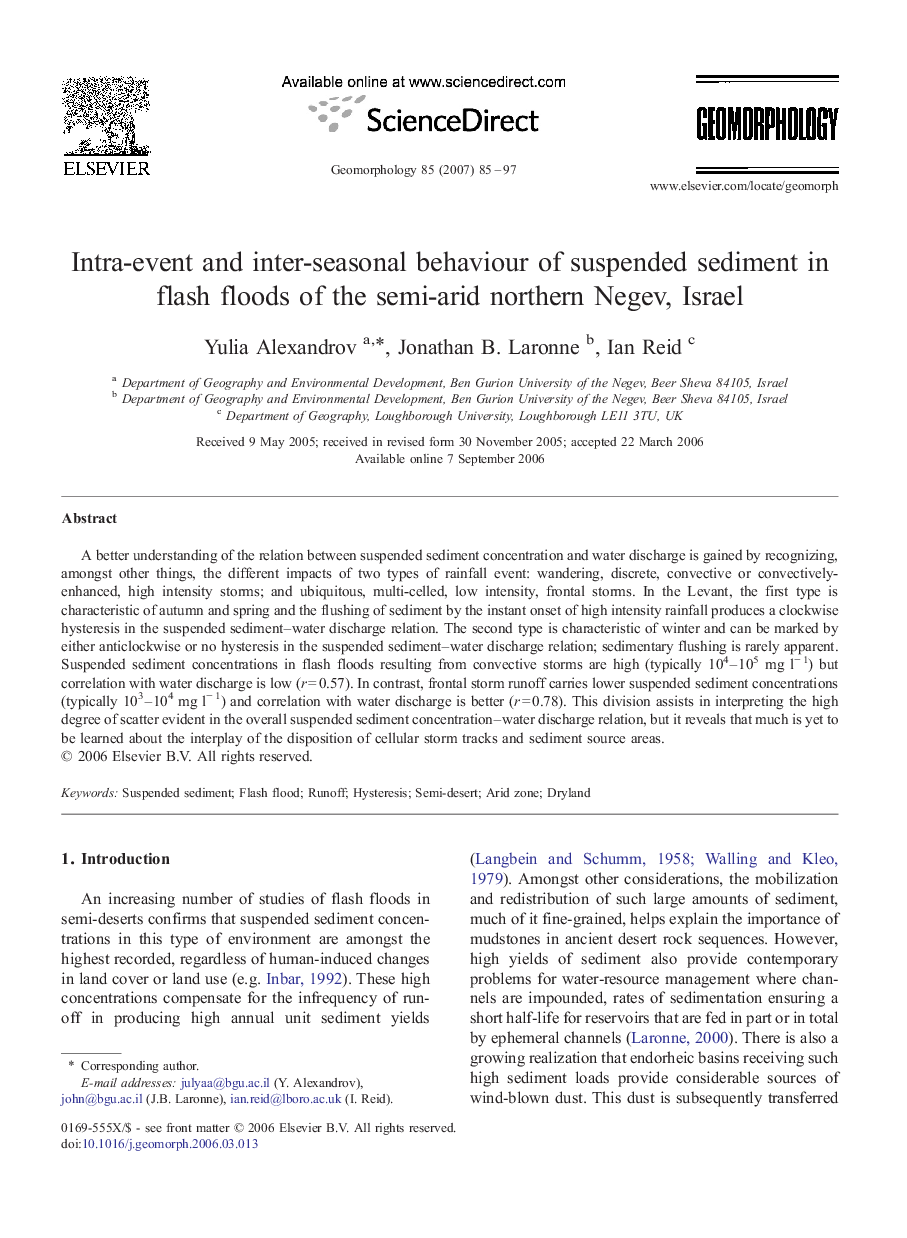| Article ID | Journal | Published Year | Pages | File Type |
|---|---|---|---|---|
| 4687384 | Geomorphology | 2007 | 13 Pages |
A better understanding of the relation between suspended sediment concentration and water discharge is gained by recognizing, amongst other things, the different impacts of two types of rainfall event: wandering, discrete, convective or convectively-enhanced, high intensity storms; and ubiquitous, multi-celled, low intensity, frontal storms. In the Levant, the first type is characteristic of autumn and spring and the flushing of sediment by the instant onset of high intensity rainfall produces a clockwise hysteresis in the suspended sediment–water discharge relation. The second type is characteristic of winter and can be marked by either anticlockwise or no hysteresis in the suspended sediment–water discharge relation; sedimentary flushing is rarely apparent. Suspended sediment concentrations in flash floods resulting from convective storms are high (typically 104–105 mg l− 1) but correlation with water discharge is low (r = 0.57). In contrast, frontal storm runoff carries lower suspended sediment concentrations (typically 103–104 mg l− 1) and correlation with water discharge is better (r = 0.78). This division assists in interpreting the high degree of scatter evident in the overall suspended sediment concentration–water discharge relation, but it reveals that much is yet to be learned about the interplay of the disposition of cellular storm tracks and sediment source areas.
